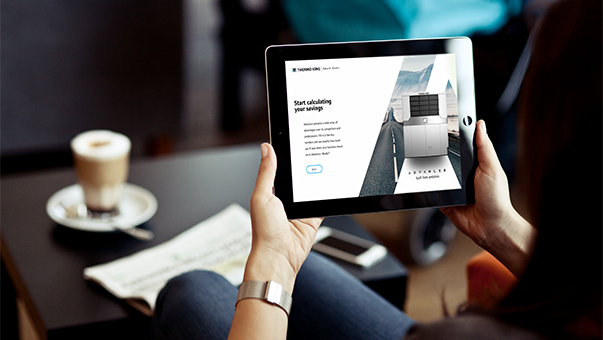
24th July 2018
Fuel economy – cutting the cost of running refrigeration equipment
Fleet Management
Fuel
There has never been a more important time to try to maximize fuel efficiency in order to maintain profit levels for your business.
Compared to the vehicle itself, diesel refrigeration equipment today is not known as a big consumer of fuel. Yet over time these fuel costs add up, and can eat into your company’s overall profitability.
For example, a trailer refrigeration unit running 2,000 hours a year over a 7-year lifespan can consume over 35,000 liters (7.700 gallons) of fuel. A 10% reduction in fuel usage will thus make a significant difference to your overall operating costs.
The question of course is how to make such reductions? To provide an answer, we offer below a range of suggestions for improving fuel economy:
Choosing the right equipment
Starting with your choice of refrigeration equipment, our suggestion is to focus in on the following areas:
- Match the equipment to the exact application it’s going to be used for. The overall specification may need to accommodate multiple client requirements, but keep in mind that both under- and over-specified equipment can lead to fuel wastage.
- Select a proven, fuel-efficient refrigeration unit. With so much choice on the market, ask your dealer is for their recommendation on what technology (aligned to expected usage) will deliver maximum energy from the fuel burned.
- Prioritize an insulated box with a low K-value. This relates to a material’s ability to conduct heat: the lower the value, the less heat is lost – and the less fuel is needed to maintain temperature stability.
- Choose equipment that is light-colored. Sounds simple, but a white/metallic body color is proven to have a distinct advantage in terms of minimizing heat gain over a more colorful alternative.
The importance of correct loading
Loading is another area that has a direct impact on fuel efficiency. Recommendations here relate as much to good load practices as much as fuel efficiency, but ultimately it comes down to reducing the ‘workload’ placed on the refrigeration system:
- Maximize air circulation, minimize resistance – load vehicles in a way that helps avoid the blockage of air flow around the cargo, and use maximum load height lines to guide operators
- Minimize the heat load on all units – by loading all goods in a fully pre-cooled condition that caters for required set-point (or if appropriate, below it)
- Retain cold air in the load space – which is done by reducing the frequency and duration of door openings and striving to keep ambient air out
Mastering operational efficiency
All of which brings us to the operational day-to-day, and the best practice recommendations for achieving fuel efficiency ‘out in the field’. Again, these are tips designed to help keep the temperature of any vehicle stable, and the refrigeration controls running smooth:
- Implement door curtains whenever possible – to help retain cold air in the load space, and to keep ambient air out
- Rely on door switches to automatically turn the unit off when doors are open – which is vitally important for avoiding any unnecessary unit operation
- Use a temperature-controlled sealed loading dock – with the intention of minimizing any heat gain of products being moved to and from the vehicle
- Choose the appropriate unit operating mode and set-point – stop/start for frozen, temperature modulation for fresh etc., to optimize unit efficiency
Taking care when off-road
The last factor relates to what you do with temperature control equipment in order to keep it in prime condition:
- Follow the manufacturer’s recommendations for servicing – and check a unit’s efficiency and a box’s K-value with regular frequency
- Repair body damage as soon as possible – and ensure body door seals (a common source of heat gain) are listed as priority maintenance items
- Consider where you’re leaving vehicles not in use – and where possible look to park them out of direct sun light to minimize the potential for heat gain
- Maximize vehicle utilization – and avoid partial loads which lead to unnecessary unit operation
- Provide thorough driver training – and ensure this complies with established Standard Operating Procedures inside your company
Maximizing the opportunity
The above recommendations help highlight a number of best practices that if followed can both directly and in-directly impact fuel economy. By adopting them, you can gain the confidence of knowing that everything possible is being done to deliver measurable cost savings.
If you want a more detailed calculation of the potential savings on offer, and the fuel efficiency targets you can set yourself, why not try out Thermo King’s Fuel Saver Calculator – which you can find here.
What the Calculator shows is how fuel efficiency sits at the heart of Thermo King Technology Development. This can be seen in all our models, including products such as the SLXi Hybrid – a refrigeration unit able to run on both full electric or autonomous diesel power.
For more information visit our SLXi Hybrid page.



